Throughout its long history, the Republic of Venice had always played an important economic, political and commercial role within the Mediterranean and beyond, which is why many Venetian words have become part of the Italian language, as well as other European languages, such as English and French. Today we will visit the city through its language, discovering 10 of the most curious and interesting words invented in Venice.
Ciao
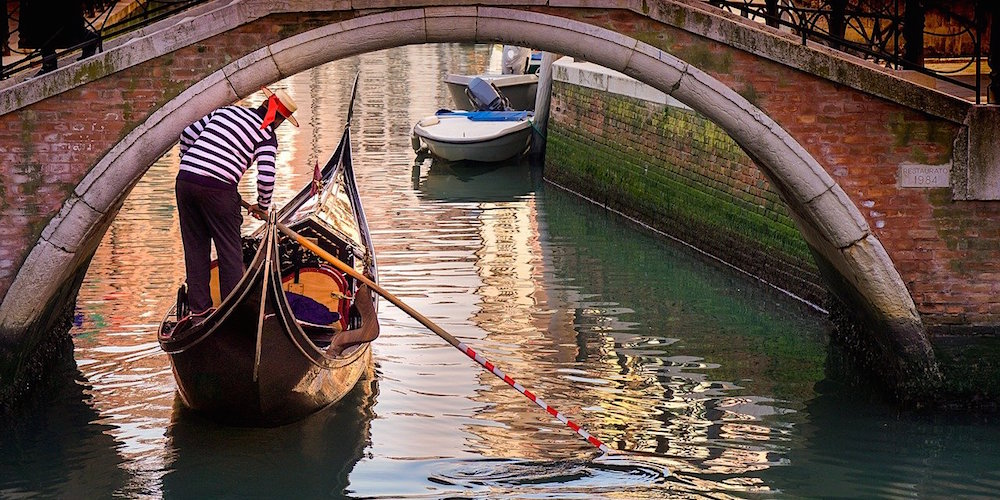
The most famous Italian word in the world was invented in Venice. "Ciao" derives from the contraction of the greeting "sciavo vostro" ("your slave"), a term deriving from "slavo" ("Slavic"), since during the late Middle Ages, in Venice, most of the slaves came from the Balkans. Initially, it was a form of reverential greeting, but in 1900 it became part of the Italian language, spreading so quickly that nowadays it is used in different parts of the world as an informal greeting.
Ghetto
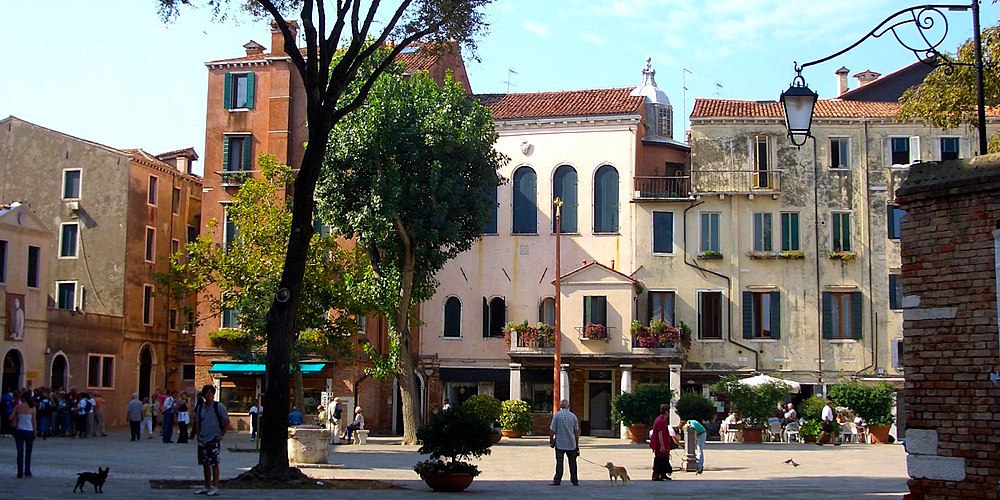
The word "ghetto" is commonly used to refer to the Jewish district of different cities, but the term originated in Venice when, in 1516, the Jewish community of Venice was forced to reside within a restricted area of the city. This area was previously known as "l'isola del getto" (the island of the metal casting) due to the presence of several public foundries. It is believed that the mispronunciation of the first Jewish inhabitants of the district, who came from Central Europe, transformed the word from "getto" to "ghetto".
Quarantine
This word, now back in use in our daily lives, was first used in Venice. Given the numerous epidemics and plagues, brought by sailors, that struck the city, the Serenissima government decided to introduce an innovative system to prevent the spread of diseases: a forty-day isolation period, hence the term "quarantine" (forty in Italian is quaranta). The old island of Santa Maria di Nazareth, later called Nazaretum and finally Lazzaretto Vecchio, was used as a shelter for infected people and a new area was established, Lazzaretto Nuovo, where newly disembarked sailors and other possible infected people were isolated for forty days.
Arsenal
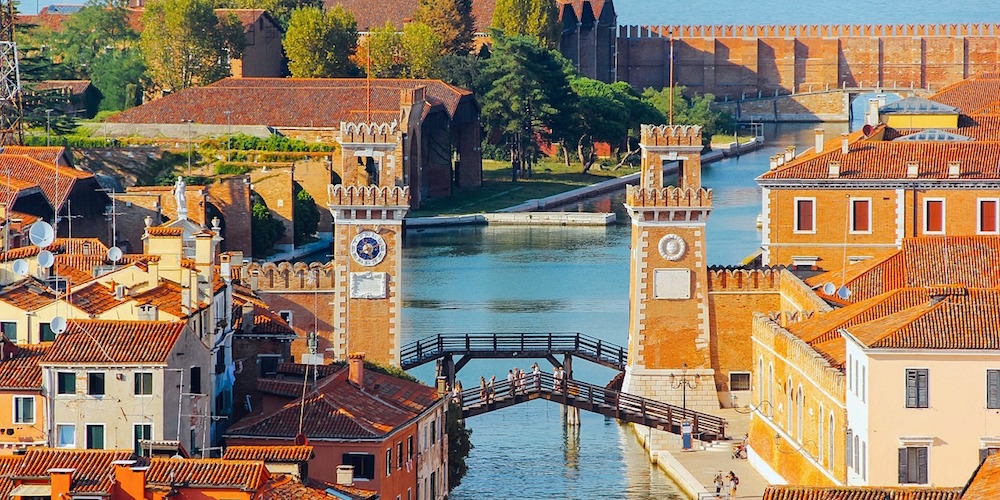
The Venetian Arsenal, a complex of former shipyards, workshops and laboratories, was one of the earliest and largest factories in pre-industrial age. The word "arsenal", which in addition to shipyards now also indicates armouries, derives from the Arabic Dār al-ṣināʿa, meaning "manufacturing shop". The spread of this word into other languages is due to the enormous popularity of the Venetian Arsenal in the last years of the 16th century.
Trousers/Pants
One of the most commonly used garments nowadays, trousers, owe their current name to the Venetian mask Pantalone, representing the typical old, miserly and lustful merchant, dressed, indeed, in characteristic long socks. The garment, common among the Venetians, became more and more associated with the character Pantalone, so much that even in France they began to use the same term for trousers, "pantalons".
Second ballot
The term "ballot" derives from the complex procedure used to elect the doge. One of the many processes involved the random drawing of "balòte", that are golden and silver balls. Since then the term has entered the language of politics not only in Italy, but also internationally, such as "ballotage" in France and "ballot" in English-speaking countries.
Ballot rigging
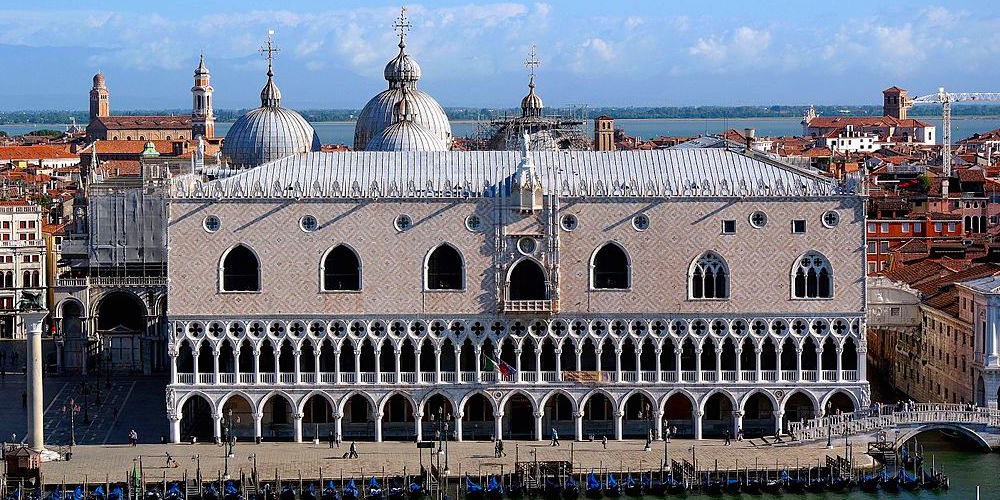
The members of the Great Council of Venice used to meet in the "Brolio", a wooded area next to the Doge's Palace, to bargain their votes with the fallen nobles. This practice gave rise to the term "broglio" to indicate electoral fraud or ballot rigging, from which the more common Italian term "imbroglio" (fraud) derives.
Gazette
In 1536 the Venetian Republic started to publish news-sheets (up to 8 pages) to update the population on the progress of the crisis with the Turkish Empire. These sheets were sold weekly for two coins, and the two coins was called "gaxeta" in Venice. The term then began to refer to the sheets themselves, Italianised as "gazzetta"; later on any newspaper with important news took the name of gazette.
Marionette
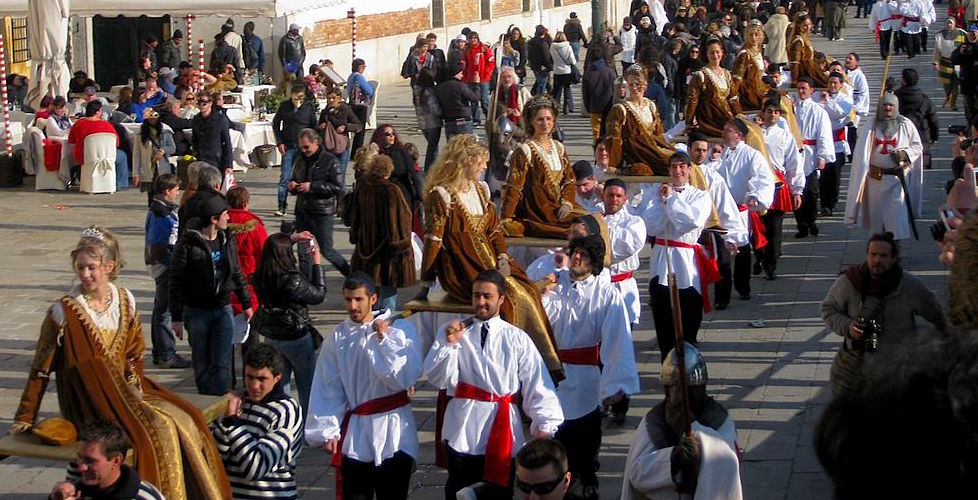
In Venice, from the 10th century, after an attack in which pirates kidnapped young brides and their dowries, but the Venetians managed to save them, they established the feast of the Marie (Virgin Mary) to thank the Virgin Mary for her intercession in saving the girls. In addition to the blessing of the future couples, the feast of the Marie consisted in drawing twelve beautiful girls belonging to the city's poorest families, each of whom was assigned to a rich family, who would give her clothes, jewellery and a dowry so that she could marry. However, this ceremony became expensive and a source of social unrest, so much that the girls were replaced by large wooden statues, called "Marione" (big Marie). Later, Venetian merchants began to reproduce these wooden statues in reduced form to sell them during the feast, calling them "marionettes" (small Marione).
Villeggiatura (Holiday)

This term, used in Italian as a synonym for "holiday", spread thanks to the habit of Venetian nobles to spend summer in their country villas in the Veneto hinterland. These villas are still there and represent an important Italian cultural heritage; there are 3807 villas in Veneto and those built by the famous architect Andrea Palladio, the Palladian villas, have been included in the UNESCO World Heritage list.










Lascia un commento